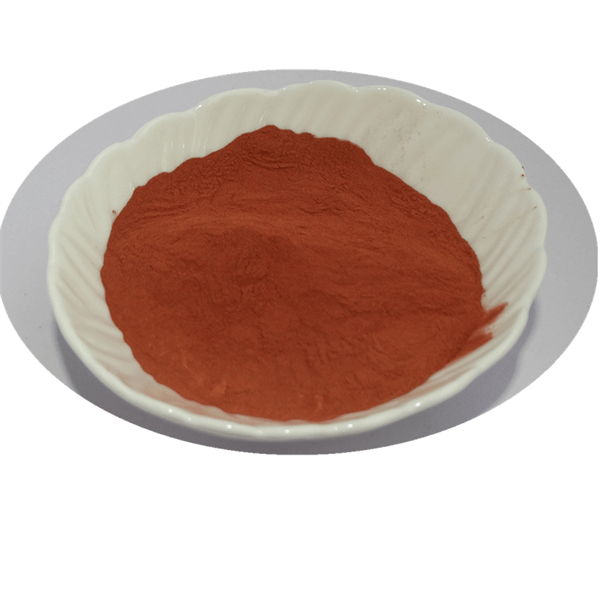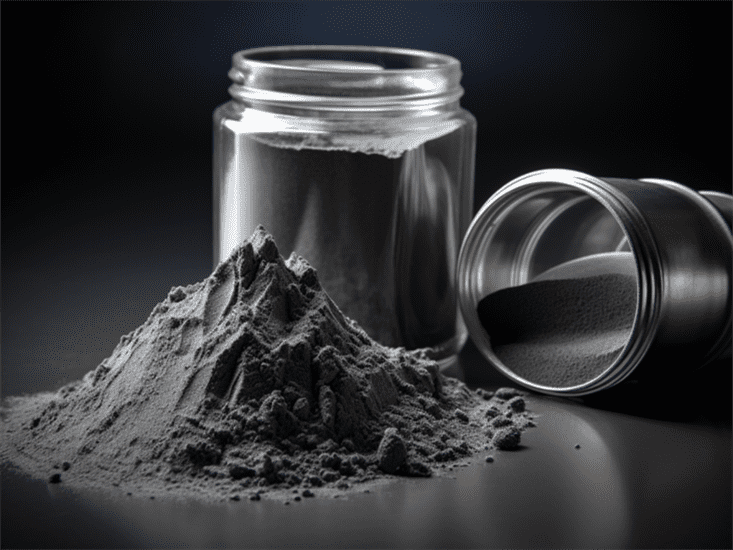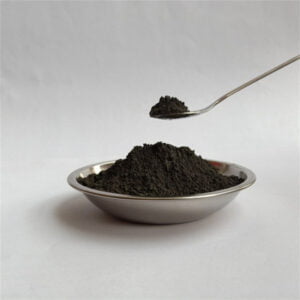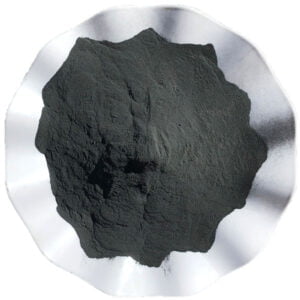3D Printing Aluminum Alloy Powder
Table of Contents
Imagine crafting complex objects with the strength and versatility of aluminum, but with the unparalleled freedom of 3D printing. This transformative vision becomes reality with 3D Printing Aluminum Alloy Powder, revolutionizing the way we design and manufacture functional parts. Delve into this guide to unlock the secrets of these remarkable materials, exploring their properties, applications, and the intricate world of 3D printing.
The Allure of 3D Printing Aluminum Alloy Powder
Aluminum, beloved for its lightness, strength, and excellent conductivity, takes on a whole new dimension in the realm of 3D printing. By transforming it into fine metallic powder, manufacturers create a feedstock that can be precisely deposited layer by layer, building intricate 3D structures. This opens doors to a universe of possibilities, from crafting lightweight yet robust components for aerospace to printing intricate heat sinks for electronics.
Here’s a table summarizing the key characteristics of aluminum alloy powders:
| Feature | Description |
|---|---|
| Material | Aluminum alloy |
| Form | Fine metallic powder |
| Benefits | Enables 3D printing of complex aluminum parts, offers lightweight yet strong structures, good thermal and electrical conductivity |
| Applications | Aerospace, automotive, robotics, electronics, medical implants |
But the magic lies not just in the material itself, but in the vast array of aluminum alloy powder options available. Each boasts a unique blend of properties, catering to specific design requirements.

A Spectrum of 3D Printing Aluminum Alloy Powder
Just like a chef selects the finest ingredients for a culinary masterpiece, choosing the right aluminum alloy powder is crucial for successful 3D printing. Let’s explore some of the most popular options:
| Alloy Powder | Composition | Properties | Applications |
|---|---|---|---|
| AlSi10Mg | Aluminum (Al), Silicon (Si) 10%, Magnesium (Mg) | Excellent strength, good ductility, favorable for casting applications | Automotive parts, engine components, structural components |
| AlSi7Mg | Aluminum (Al), Silicon (Si) 7%, Magnesium (Mg) | Similar to AlSi10Mg, but slightly lower strength | General-purpose applications, housings, brackets |
| AlSiMgMn | Aluminum (Al), Silicon (Si), Magnesium (Mg), Manganese (Mn) | Improved corrosion resistance compared to AlSi10Mg and AlSi7Mg | Marine applications, heat exchangers |
| 6061 | Aluminum (Al), Magnesium (Mg), Silicon (Si) | Excellent machinability, good corrosion resistance, widely used for general-purpose applications | Prototypes, complex geometries, housings |
| 2024 | Aluminum (Al), Copper (Cu), Magnesium (Mg) | High strength-to-weight ratio, excellent fatigue resistance | Aerospace components, high-performance applications |
| 7075 | Aluminum (Al), Zinc (Zn), Magnesium (Mg) | Very high strength, good wear resistance | Aircraft parts, sporting goods, high-stress applications |
| A356 | Aluminum (Al), Silicon (Si) 7%, Magnesium (Mg) | Excellent castability, good strength | Engine blocks, cylinder heads, complex castings |
| AM260 | Aluminum (Al), Copper (Cu), Magnesium (Mg) | High strength, good weldability | Automotive parts, structural components |
| Scalmalloy | Aluminum (Al), Scandium (Sc) | Exceptional strength-to-weight ratio, high-temperature performance | Aerospace components, demanding applications |
| Maraging Aluminum | Aluminum (Al), Copper (Cu), Titanium (Ti), Zinc (Zn) | High strength, good ductility even at high temperatures | Aerospace parts, defense applications |
This table provides a glimpse into the diverse landscape of aluminum alloy powders. From the general-purpose versatility of 6061 to the high-performance strength of 2024 and Scalmalloy, there’s a perfect powder for nearly every 3D printing need.
But the story doesn’t end there. Each powder type comes in various particle sizes, ranging from micrometers to hundreds of micrometers. This particle size significantly influences the printability, surface finish, and mechanical properties of the final 3D-printed part.
Common Applications of 3D Printing Aluminum Alloy Powder
The applications of 3D printing aluminum alloy powder are as vast as human imagination. Here are some of the most compelling examples:
Automotive
- Customizable car parts: Imagine crafting lightweight, high-strength brackets, complex engine components, or even personalized car interiors using 3D printing. Aluminum alloy powders make this a reality, enabling automakers to design and manufacture parts with intricate geometries that would be difficult or impossible with traditional methods.
- Prototyping and testing: The rapid prototyping capabilities of 3D printing are a boon for the automotive industry. Designers can quickly iterate on designs, creating functional prototypes of car parts from aluminum alloy powders to test performance and fit before committing to mass production.
- Lightweight components: Every gram counts in the race for fuel efficiency. Aluminum alloy powders, known for their excellent strength-to-weight ratio, are ideal for creating lightweight car parts like wheels, suspension components, and even engine blocks. This translates to better fuel economy and reduced emissions.
Robotics
- Functional robotic parts: The field of robotics thrives on lightweight, yet robust components. 3D printing with aluminum alloy powders allows for the creation of custom grippers, robotic arms, and other functional parts that are strong enough to handle demanding tasks while remaining lightweight for improved maneuverability.
- Customization for specific applications: Robots come in all shapes and sizes, designed for a wide range of tasks. Aluminum alloy powders enable the creation of customized robotic parts that perfectly fit the specific needs of an application. For example, a robot designed for delicate assembly tasks can have lightweight, high-precision grippers printed from a suitable aluminum alloy powder.
- Complex internal structures: 3D printing excels at creating intricate internal structures that would be challenging or impossible to achieve with traditional manufacturing methods. This allows for the design of lightweight yet strong robotic bodies with internal channels for wires and other components.
Beyond These Examples: A Universe of Possibilities
The potential applications of 3D printing aluminum alloy powder extend far beyond the industries mentioned above. Here are a few more exciting possibilities:
- Medical implants: Customized prosthetics and implants made from biocompatible aluminum alloys can be 3D printed to perfectly match a patient’s anatomy.
- Electronics: Heat sinks and other thermal management components with intricate geometries can be printed from aluminum alloy powders for improved heat dissipation in electronic devices.
- Consumer goods: From lightweight and durable sporting goods to custom-designed bike frames, 3D printing with aluminum alloy powders opens doors for innovative consumer products.
Diving Deeper: Specifications, Sizes, Grades, and Standards
Choosing the right aluminum alloy powder for your 3D printing project requires careful consideration of various factors. Here’s a breakdown of some key specifications to keep in mind:
| Property | Description | Impact on 3D Printing |
|---|---|---|
| Particle size | Measured in micrometers (µm) | Affects printability, surface finish, and mechanical properties of the final part. Smaller particles generally create smoother finishes but can be more challenging to print. |
| Chemical composition | Specific percentages of alloying elements like silicon, magnesium, or copper | Influences the strength, ductility, corrosion resistance, and other properties of the final part. |
| Flowability | How easily the powder flows | Impacts printability; powders with good flowability are easier to spread evenly during the 3D printing process. |
| Sphericity | The roundness of the powder particles | Affects packing density and printability; more spherical particles pack together more efficiently, leading to better mechanical properties in the final part. |
| Powder grade | Indicates the purity and quality of the powder | Higher grade powders typically offer better printability and mechanical properties. |
| Standards | Industry standards that define the specifications for the powder | Ensure compatibility with your 3D printer and desired application. Common standards include ASTM International (ASTM) and American Society of Mechanical Engineers (ASME). |
Here’s a table outlining some of the available particle sizes, grades, and relevant standards for some popular aluminum alloy powders:
| Alloy Powder | Particle Size (µm) | Grade | Standards |
|---|---|---|---|
| AlSi10Mg | 25-45 | AM | ASTM B29 |
| 6061 | 15-45 | AM | ASTM B289 |
| 2024 | 25-45 | AM | ASTM B760 |
| 7075 | 15-45 | AM | ASTM B760 |
Note: This table is not exhaustive, and specific options may vary depending on the manufacturer.

Suppliers and Pricing
The availability and pricing of aluminum alloy powders can vary depending on the specific alloy, particle size, grade, and supplier. Here’s a general overview:
- Leading suppliers: Some of the leading suppliers of aluminum alloy powders for 3D printing include:
- APWorks (Germany)
- Höganäs AB (Sweden)
- SLM Solutions (Germany)
- Alcoa (US)
- Norsk Hydro (Norway)
- Sandvik Hyperion (Sweden)
- Pricing factors: The cost of aluminum alloy powders is influenced by several factors, including:
- Material cost: The specific alloying elements used in the powder can affect the price. Powders with higher concentrations of expensive elements like scandium (Scalmalloy) will naturally be more costly.
- Particle size and morphology: Finer particle sizes and more spherical powder morphologies generally command a premium price due to the increased processing involved.
- Grade and purity: Higher grade powders with tighter quality control measures will typically be more expensive.
- Supply and demand: Market fluctuations in the availability of raw materials and the overall demand for specific aluminum alloy powders can impact pricing.
- Pricing range: As a general estimate, expect aluminum alloy powders for 3D printing to range from around $30 to $200 per kilogram, with some specialty powders exceeding this range. It’s crucial to contact potential suppliers directly for accurate quotes based on your specific requirements.
Advantages and Limitations: the Pros and Cons
3D printing with aluminum alloy powders offers a compelling set of advantages, but it’s also essential to consider the limitations of this technology:
Advantages
- Design freedom: 3D printing allows for the creation of complex geometries that would be difficult or impossible to achieve with traditional manufacturing methods.
- Lightweighting: Aluminum alloy powders are known for their excellent strength-to-weight ratio, enabling the creation of lightweight yet robust parts.
- Rapid prototyping: 3D printing facilitates rapid prototyping, allowing for quick design iterations and faster time to market.
- Customization: Aluminum alloy powders can be customized to meet specific performance requirements for a particular application.
- Material efficiency: 3D printing minimizes material waste compared to traditional subtractive manufacturing techniques.
Limitations
- Cost: 3D printing with aluminum alloy powders can be a relatively expensive process, especially for larger parts or those requiring high-grade powders.
- Build size limitations: Current 3D printing technologies may have limitations on the size of parts that can be printed with aluminum alloy powders.
- Surface finish: The surface finish of 3D-printed parts from aluminum alloy powders may require additional post-processing steps depending on the desired aesthetics and functionality.
- Material properties: While some aluminum alloy powders offer good mechanical properties, they may not always match the properties of wrought or cast aluminum in all aspects.
- Limited printer compatibility: Not all 3D printers are compatible with aluminum alloy powders. Ensure your printer is equipped for handling metal powders before making a purchase.
Carefully consider these advantages and limitations when deciding if 3D printing with aluminum alloy powders is the right choice for your project.

FAQ
Here are some frequently asked questions regarding 3D printing with aluminum alloy powders, answered in a clear and concise format:
Q: What are the safety considerations when handling aluminum alloy powders?
A: Aluminum alloy powders can be flammable and pose a health risk if inhaled. Always follow the safety guidelines provided by the powder manufacturer and wear appropriate personal protective equipment (PPE) when handling these materials.
Q: How strong are 3D-printed parts made from aluminum alloy powders?
A: The strength of 3D-printed parts from aluminum alloy powders depends on several factors, including the specific alloy, printing process parameters, and post-processing treatments. However, these parts can achieve very good mechanical properties, rivaling those of traditionally manufactured aluminum components in many cases.
Q: What are some of the post-processing techniques used with 3D-printed aluminum parts?
A: Common post-processing techniques for 3D-printed aluminum parts include heat treatment for improved strength, machining for dimensional accuracy, and surface finishing for aesthetic or functional purposes.
Q: Is 3D printing with aluminum alloy powders environmentally friendly?
A: Compared to traditional manufacturing methods that involve significant material waste, 3D printing offers a more sustainable approach. Additionally, aluminum itself is a highly recyclable material. However, the environmental impact of 3D printing with aluminum alloy powders needs to be considered holistically. The energy consumption involved in the printing process and the potential environmental impact of any hazardous materials used during printing or post-processing should be factored in.
Q: What’s the future outlook for 3D printing with aluminum alloy powders?
A: The future of 3D printing with aluminum alloy powders appears bright. Here are some exciting trends to watch:
- Development of new alloys: Researchers are constantly developing new aluminum alloys specifically tailored for 3D printing, offering even better properties and printability.
- Advancements in printing technology: As 3D printing technology continues to evolve, we can expect faster printing speeds, larger build volumes, and improved surface finishes for parts printed with aluminum alloy powders.
- Reduced costs: With increasing adoption and advancements in manufacturing techniques, the cost of aluminum alloy powders and 3D printing processes is expected to decrease, making this technology more accessible to a wider range of applications.
By addressing current limitations and capitalizing on these advancements, 3D printing with aluminum alloy powders has the potential to revolutionize the way we design and manufacture functional metal parts across various industries.
Conclusion
3D printing with aluminum alloy powders opens a new chapter in manufacturing, offering unparalleled design freedom, lightweighting potential, and rapid prototyping capabilities. As you delve deeper into this technology, consider the factors discussed in this guide to make informed decisions and unlock the vast potential of 3D-printed aluminum parts for your next project. Remember, 3D printing is not just about creating objects; it’s about creating possibilities.
Share On
MET3DP Technology Co., LTD is a leading provider of additive manufacturing solutions headquartered in Qingdao, China. Our company specializes in 3D printing equipment and high-performance metal powders for industrial applications.
Inquiry to get best price and customized Solution for your business!
Related Articles
About Met3DP
Recent Update
Our Product
CONTACT US
Any questions? Send us message now! We’ll serve your request with a whole team after receiving your message.

Metal Powders for 3D Printing and Additive Manufacturing
COMPANY
PRODUCT
cONTACT INFO
- Qingdao City, Shandong, China
- [email protected]
- [email protected]
- +86 19116340731

















